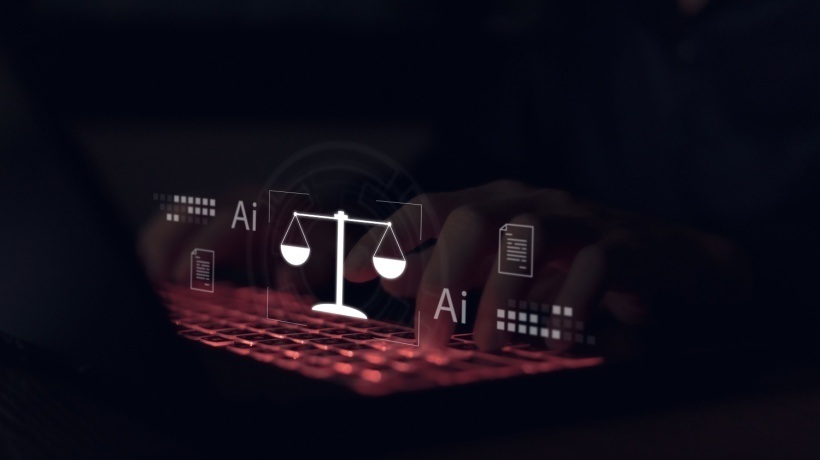Ways To Deliver Learning In 2021 And Main Challenges
The COVID-19 pandemic has significantly affected many aspects of social life, including the transformation of the educational system. In fact, the world faced a learning crisis even before COVID-19. Statistics show that in low and middle-income countries, the productivity of educational activities reached 53%. Almost two-thirds of students were considered inexperienced readers in the US before the pandemic, according to Nick Gaehde [1], president of Lexia Learning.
Although the existing learning system wasn’t perfect, the world was not ready for a rapid education restructuring. We moved in this direction slowly, experiencing frustration, uncertainty about the future, and even fear. The pandemic pushed an entire community to think of ways to deliver learning remotely and transformed drastically the way we teach, learn, and interact.
Ways To Deliver Education In 2021
Distance Learning
Distance (remote) education was often a single option during the last two years. Aimed at keeping physical distance between participants, remote learning is delivered and managed, using a wide variety of online applications.
Before the pandemic, online learning definitely existed and complied successfully with its main functions:
- Making access to education possible for everyone disregarding their location
- Supporting and supplementing traditional learning
However, the education industry wasn’t ready to face the situation of having no options left, except for distance learning. Unfortunately, even now there aren't standards or guides for schools to increase the efficiency of eLearning adoption, according to EdTech Magazine.
Classroom Learning
As school doors have been closed for almost two years, numerous researches were conducted to prove students’ social isolation will backfire. Anxiety, stress, loneliness, and failures in time management are only the tip of the social isolation iceberg. For some students, a classroom is a kind of sanctuary, where they can hide from their problems and get emotional support from teachers and classmates.
Besides, there is a kind of magic happening in classrooms. Humans are a part of a very sociable group, so in-person communication that students can mainly get in classrooms still matters! Getting back to traditional classroom learning as it is can be a challenge in the post-COVID world (still, many schools will reopen in September 2021 with certain precautions). That’s why another way of learning delivery is taking a hit.
Hybrid Learning
Hybrid learning incorporates online learning methods and classroom lessons. This is an opportunity to support the learning process with additional resources and tools, having in-person lessons with a teacher at the same time. Hybrid learning seems to be a perfect option that allows dividing students into shifts, encouraging them to keep their distance. Together with a few other precautions, this can be a working option that balances safety with social needs.
K-12 Education Software Types And Efficiency
Both hybrid and online K-12 learning systems are implemented based on software products, web, mobile applications, and learning management systems.
The software designed for K-12 may perform a large number of functions:
- Creating the study environment for remote learning
- Ensuring a smooth (ideally!) interaction between all participants in an online learning process
- Video conferencing for conducting online classes
- Monitoring students’ engagement
- Managing curriculum
- Monitoring attendance
- Uploading assignments
- Creating online tests, quizzes, questionnaires, exercises
- Sharing educational resources and support materials
- Delivering teachers’ feedback
- Financial reporting
- Progress reporting
- Delivering information to parents
However, there is still a problem: The majority of all-in-one solutions for education are complex and cumbersome from one side, rather expensive and hard to integrate from the other. That’s why teachers, students, and school administration tend to choose a point solution for each challenge that leads to a lack of integration between online applications and school departments and data losses, not to mention the amount of time consumed in setting up and getting used to a specific solution.
Let’s find out which software solutions exist and are widely used in the K-12 sector:
Learning Management Systems
A learning management system is a complex, all-in-one platform for online education, organization, and delivery.
The system helps educators:
- Create, manage, and share teaching materials
- Deliver courses online
- Give assignments
- Monitor students’ attendance and progress
- Report grades
- Ensure effective communication between teachers, students, and parents by messaging and sharing the actual information in one place
In K-12 schools, an LMS is a central teaching and learning hub around which all teaching and learning activities are built. This facilitates the process of online education organization from one side, as you have a "centralized data storage" and a "single source of truth" for teachers, administration, students, and their families. On the other hand, don’t forget about the integration of a system within the existing background, the onboarding process that can be rough for both teachers and students, initial training, and problem-solving.
Disadvantages
- Cumbersome, slow, not always effective
- Rather expensive
- Hard to use, steep learning curve
- Buggy
- Small children need support from adults when using a system
Web And Mobile Applications
There is definitely a wide range of web and mobile applications to address various educational needs and improve learning efficiency.
These solutions are rather supplementary and can be used to:
- Go deeper into a specific topic
- Reinforce existing knowledge and skills
- Acquire competence in a particular field or subject
Usually, the choice of an application is up to teachers, who are free to offer options based on their personal opinion and vision of the study process. It shouldn’t always be a kind of "study hard" resource; many web and mobile applications of this type are gamified to encourage students to use them more and learn through play.
A booming side box video game, Minecraft, released an education pack at the beginning of quarantine to help teachers and students transform their learning experience and try game-based online learning. This is a perfect example of adapting a big and not so flexible education machine to a new generation of learners, current trends, and actual events.
Disadvantages
- Can be used only as a supplementary resource
- Should be carefully selected and adjusted to a specific learning case
School Administration Software
School management software focuses on serving the administration of K-12 schools. These systems help staff automate the administrative tasks management (school admissions, scheduling, billing, internal and external communications, dismissal, etc.) From virtual grade books for monitoring the efficiency of the educational process and each student, suitable for school teachers, administration, and parents to school dismissal and safety apps, the software helps govern schools online, switching to paperless management that can be performed remotely. K-12 management systems are a great resource for parents, teachers, and students to keep updated on everything from a school enrollment process to the last day of a school year when studying remotely.
Video Conferencing Software
Although this software type isn’t on the EdTech starter pack, it just can’t be ignored on this list, as these tools still make a great contribution to eLearning, enabling educators to organize online classes. Each of us has definitely used Zoom, Skype, Google classroom (hangouts), etc., at least once to get an idea about their usability, offered opportunities, and data security options (remember the infamous Zoom privacy issues).
Is it convenient for teachers and students to get online lessons organized via such tools? The question is rather rhetorical, as there is no alternative (especially when we’re talking about free solutions). Unfortunately, not every LMS incorporates the video calls functionality into their system (partly because it’ll become even more cumbersome, buggy, and hard to use). So, there’s no choice left, except for using the popular video conferencing applications, trying to make the most of them.
Challenges Of 21st Century Education
Devices Shortage
As you can tell, remote learning assumes a student has a personal device to use for educational purposes. But if there’s no such option? Sharing devices with siblings and parents still imposes certain limitations on the learning process, organization, and time management. When it comes to hybrid learning, some schools are using their funding to provide classrooms with expensive, new devices. Others have taken a more cost-effective approach by asking students to bring their own devices, equipping each desk in a classroom with a multi-device charging station.
Intermittent Connection
Everyone knows what this is about. Who hasn't had their call interrupted because of a bad internet connection? The more people are on a call, the harder it is to make sure everyone is "in," listening carefully and perceiving the information given by a teacher. And if in the case of a gadgets shortage schools can solve the problem somehow, in the case of an unstable internet, all we can do is to accept the situation and exhale.
Software Support
It’s obvious that educational institutions avoid supporting the IT departments in-house and look to hire companies providing digital services not only as suppliers of this technology but also as lifetime support agents. Considering the fact that the amount of software that should be deployed/integrated/set up has grown significantly over the past year and the number of IT employees in low-funding schools has not changed, there’s still a gap requiring more human resources able to maintain the technology.
Integration Between Numerous Applications
Adopting an all-in-one solution is costly, among other things. Not every K-12 institution can afford to install and support the solution. So, it’s still on teachers’ shoulders to find a way to deliver online education using a bunch of free tools that often can’t be integrated with each other. This turns an everyday teaching routine into an overwhelming, time-consuming, and never-ending process, requiring much effort for keeping on track.
No Learning Strategy Established
The real problem of any educational establishment is not a lack of gadgets or data losses; it’s a lack of a high-level educational strategy designed to be implemented in today’s reality. It’s hard to get the fragmented "learning" pieces together—a quiz, an in-person lecture, an online test, a video call—into an integrated vision of 21st-century education. Technology will remain an essential part of education but it can’t ensure effective learning itself. Technology can't be put in the center of an education strategy; it’s a place for students and teachers, their motivations, lifestyles, requirements, and redefined vision of an educational process.
Wrapping Up
We’re happy to witness a full renovation of many established systems and lifestyles, making room for new, fresh, and bold ideas. Generations change, people evolve, so should learning methods. Infamous events make us reconsider the whole educational system, giving initiative back to students who should have learned to use gadgets and the internet not only for fun but also for getting educated. And furthermore, educate their teachers, helping them cope with a whole new digital world.
Despite a number of problems education faces today, it’s a turning point for getting rid of old, inefficient practices, taking only the best into the bright future. Only a symbiotic relationship between students and teachers will contribute to rediscovering the balance in today’s chaos in the sphere of education.
References:
[1] 30 K-12 EdTech predictions for 2021
[2] Zoom security issues: Everything that's gone wrong (so far)









